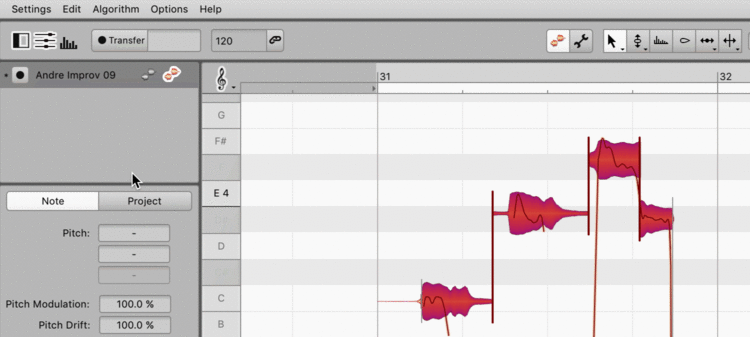Fabricating double-tracks
In an ideal world, vocalists would remain in the studio until they had laid down a sufficiently large number of double-tracks. But in the real world, the requisite time (and energy) is not always available and you will find yourself with an insufficient number of double-tracks at your disposal prior to mixing. Here are two tips to help you get round the problem.
Creating double-tracks from out-takes
Even if you were not able to record any double-tracks as such, you will still as a general rule have at your disposal the takes from which you stitched together the composite lead vocal track. You will therefore have a fair number of discarded snippets, or indeed entire tracks, that can be used to make up for the lack of dedicated double-tracks.
This material will doubtless have its imperfections – otherwise you’d have included it, one assumes, in your composite track – and may call for more drastic intervention with Melodyne. But whilst the results, heard in isolation, may be less than ideal, they’ll be fine in the context of the entire mix, particularly since they’ll be far quieter than the lead vocal itself.
Doubling with copy/paste
As an alternative, or in addition, to the use of out-takes, you can make a copy of the master lead vocal track. The quickest way to do this is to duplicate the entire DAW track. The track thus created will then automatically contain a copy of Melodyne complete with all your existing edits.
To make this duplicate sound like a double-track (i.e. a separate performance), you must introduce discrepancies in terms of tuning, timing and perhaps even tone color between this and the original. To do this, begin by selecting all the notes of the duplicate track and choosing Edit > Add Random Deviations.

To emulate multiple double-tracks in this way and do so quickly, create multiple copies of the track at the same time in the DAW. Switch all the resulting tracks to “edit” in Melodyne and select all the notes before executing the Add Random Deviations commands, repeatedly, until the desired results are obtained.
Depending on the Melodyne edition you use, you can then individualize your copies in other ways:
- by attenuating here, and muting there, breaths and sibilants
- by reshaping their pitch curves in particular places using the time handles
- by reducing the pitch modulation of some copies and increasing that of others
- by applying the Sound Editor to the various copies with different settings for each
- by assigning different effects (settings) and stereo positions to the various copies in the DAW
Admittedly double-tracks created artificially through copying do not sound quite the same as “genuine” double-tracks or those created from out-takes. Which to prefer is, again, a matter of taste and musical context – and, of course, the various techniques can even be combined.